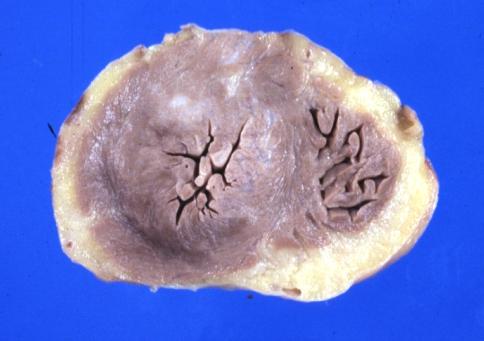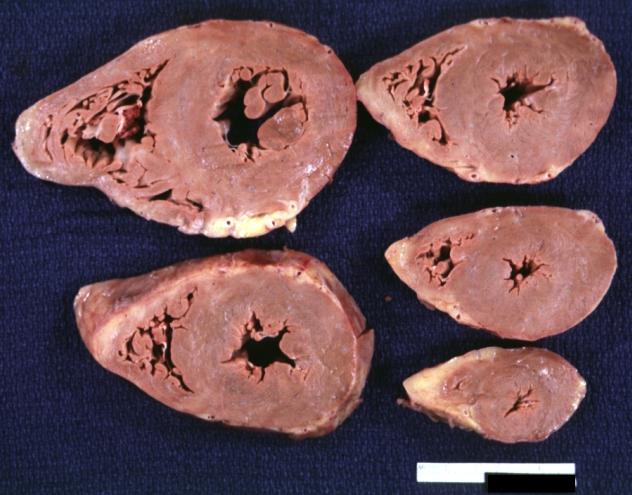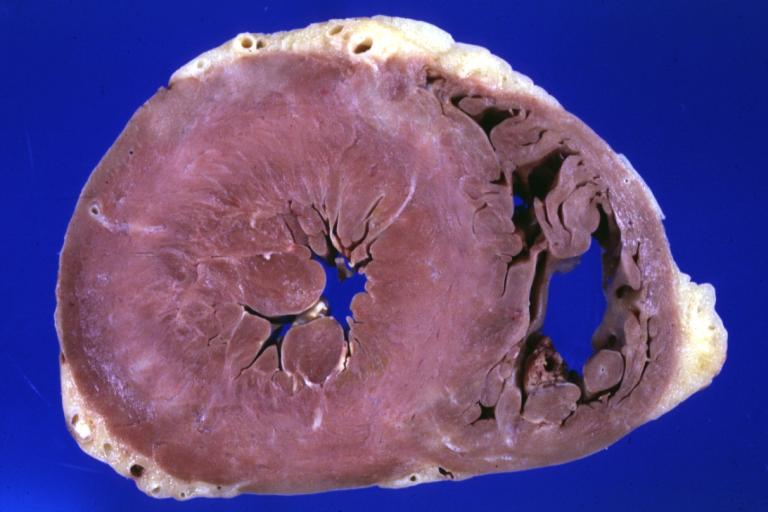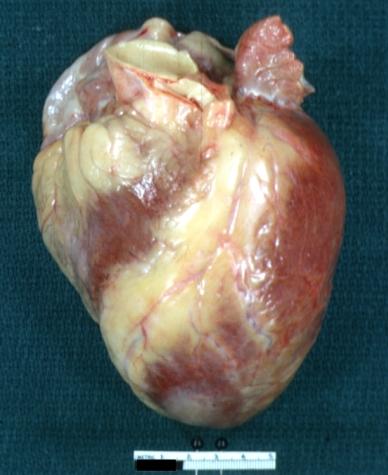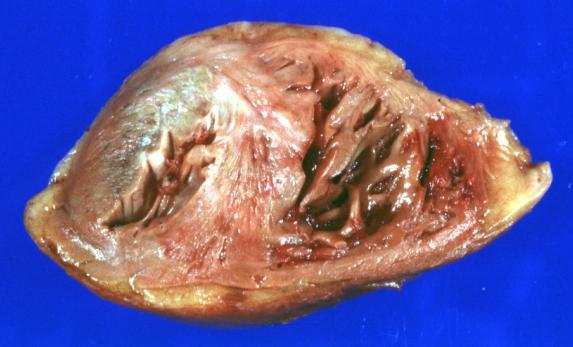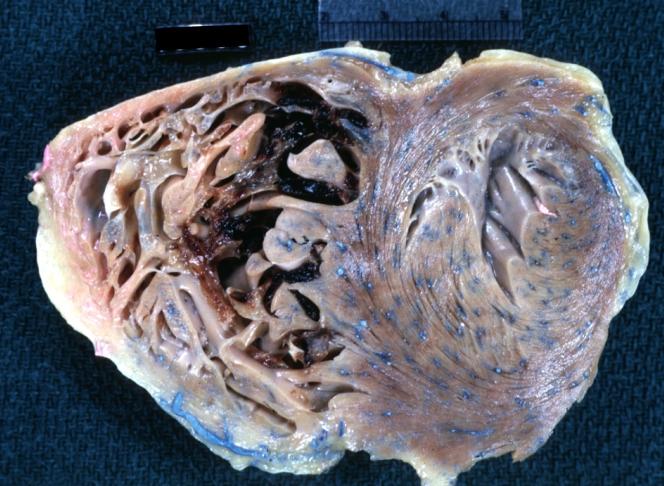Cardiomegaly
Template:DiseaseDisorder infobox
|
Cardiomegaly Microchapters |
|
Diagnosis |
|---|
|
Treatment |
|
Case Studies |
|
Cardiomegaly On the Web |
Editor-In-Chief: C. Michael Gibson, M.S., M.D. [1]; Associate Editor in Chief: Cafer Zorkun, M.D., Ph.D. [2]
Overview
Pathophysiology
Epidemiology and demographics
Risk factors
Screening
Natural History, Complications & Prognosis
Causes
Differential diagnosis of cardiomegaly
Diagnosis
History and Symptoms | Physical examination | Lab tests | Electrocardiogram | Chest x ray | MRI | CT | Echocardiogpraphy or ultrasound | Other diagnostic studies | Pathological findings
Other Diagnostic Studies
- Exercise or pharmacologic stress testing may be indicated in those patients suspected of having coronary artery disease
- Patients suspected of having valvular disease or coronary artery disease may need a cardiac catheterization for full evaluation following echocardiography
Pathological Findings
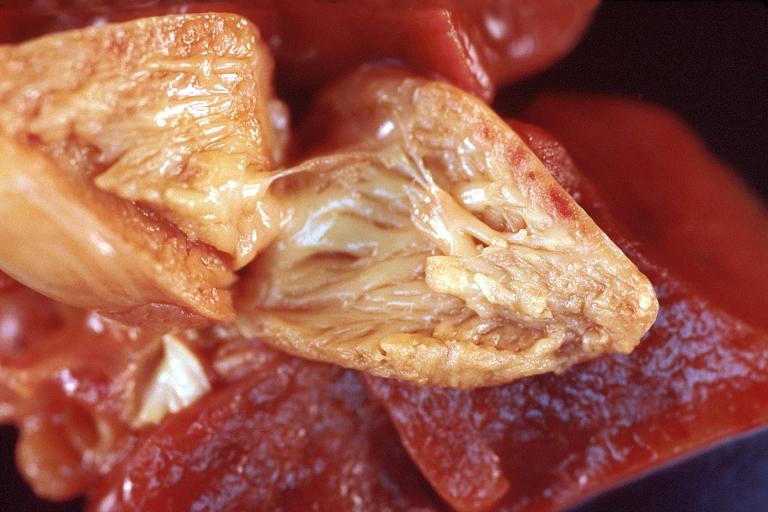
Treatment
Pharmacotherapy
Acute Pharmacotherapies
- Administration of digoxin, diuretics, antiarrhythmics and/or preload and afterload reducers per clinical indication
Chronic Pharmacotherapies
A combination of diuretics and angiotensin converting enzyme (ACE) inhibition is currently the standard of care. Digoxin may reduce the frequency of rehospitalization, but does not improve mortality.
Surgery and Device Based Therapy
- In patients who are awaiting a transplant for end-stage symptomatic heart failure, implantable ventricular assist devices may serve as a temporary aid for compensation.
Transplantation
- In patients who are in end-stage symptomatic heart failure, a heart transplant my be necessary.
Future or Investigational Therapies
Mechanical strategies currently under investigation include:
- Development of devices to reduce the size of the heart
- Development of a device to exclude that portion of the apex where clots may form.
Pathological Findings
